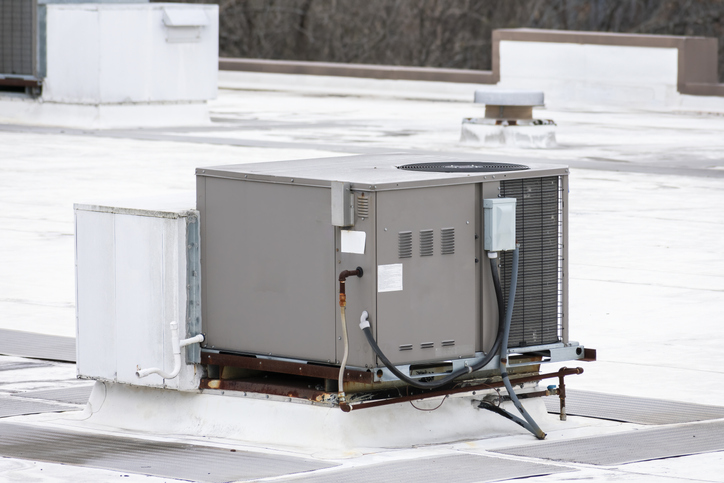The Heat is Turning Up for Retailers, Restaurants, and More
For many industries, the warmer months present both opportunities and challenges. Opportunities in the sense that pleasant weather means more foot traffic and thus more revenue. Challenges in the sense that more people in stores and offices — and hotter exterior conditions — means your HVAC systems are working hard over long periods of time to maintain comfortable interior temperatures. Because of this, it’s important to take a strategic approach to commercial HVAC asset management.
The current supply chain environment further compounds these challenges, as many HVAC providers around the country are currently quoting lead times for replacement systems anywhere from three to nine months. It’s likely that these estimates will continue to extend out even further throughout the rest of the year — along with higher prices.
Solution: A Proactive Commercial HVAC Asset Management Review
Before we dig into the details of this, it’s important to clarify that a commercial HVAC asset management review isn’t something that every provider offers — particularly if you or your store leaders are working with local self-performing companies for HVAC maintenance. Typically, this service is available through an aggregator — a company that manages HVAC, electrical, signing, plumbing, and other assets at all of your locations through a single program. You can learn more about the differences between these two types of facility management companies here.
As an example, CLS Facility Services is an aggregator that partners with organizations across multiple industries to design, implement, and manage commercial HVAC asset management programs. For many clients, we conduct an annual review of all HVAC assets across all locations that consists of:
- Identifying the oldest units based on age, condition, and performance data
- Quoting potential replacements based on location lease term
- Coordinating each replacement via our network of nationwide vendors and partners
- Centralizing all documentation, asset lists, and project details in our online portal
Advantages of a Proactive Approach
- You get ahead of lead times — As a facility manager or other leader at your organization, the last thing you need to deal with is several-month lead times when a cooling system goes down or starts noticeably underperforming. While outages and other issues happen and can’t always be avoided, taking a proactive approach ensures that orders for replacement HVAC systems are placed early — before those systems cause major issues that impact productivity and sales at your locations.
- You avoid temporary cooling solutions — Temporary heating and cooling systems are both expensive to implement and sustain over time. Prior to today’s challenging environment, temporary systems might’ve only been in place a few weeks at most. Now, you’re looking at a few to several months. These systems solve a problem, but they’re inefficient and disruptive — particularly interior systems. Proactively assessing existing systems as part of an annual commercial HVAC asset management strategy ensures that you’re in the best position possible to avoid these.
- Outdated units are proactively replaced — Whether you lease or own the structure of each location, the existing HVAC assets there could be showing signs of age and wear. Older systems naturally aren’t as efficient as newer versions, which sets you up for a larger (and likely unexpected) expense later. Getting ahead here will ensure that costs associated with an unexpected replacement are mitigated.
- Existing units perform more efficiently — Multi-unit systems rely on each unit performing reliably in order to keep your interior spaces comfortable. If one unit goes down, the other units have to work harder, which results in higher energy costs. If you only have one unit, an outage means you may have to close until a replacement can be installed or a temporary solution can be implemented. Proactively assessing the assets across your footprint ensures that older units that are part of a multi-unit system are identified and replaced, preventing excess energy costs as well as wear and tear on existing systems.
- Dynamic Energy Savings — Not only do new HVAC units foster maintenance savings, but they also create large energy savings. Installing modern HVAC equipment can lead to 5% to 20% energy savings, as new technologies offer less emissions, a more green environment, and lower energy usage. Ultra energy-efficient units can even be eligible for utility rebates to help offset costs.
Experience Peace of Mind — and Better Performing HVAC Across Your Footprint
CLS Facility Services has been supporting organizations nationwide with proactive, preventive maintenance programs on HVAC, lighting, electrical, signage, fire/life safety systems, and numerous other assets for more than 50 years. Every year throughout our history, we’ve helped companies develop and implement commercial HVAC asset maintenance strategies that produce meaningful results. But that’s just the beginning:
- We cover all 50 states and Canada — wherever you are, we’ll be there to support you
- We complete more than 10,000 HVAC preventive maintenance programs annually
- You receive a dedicated account management team (the same team for emergency needs)
- Our team members have an average tenure of 14 years with our organization
- We work on nearly 20 work order management systems and offer a proprietary system
- All work scopes are uniform with cost-competitive pricing across all of your locations
Whether you’re looking for a partner to support your growth or are frustrated with an existing partner, our team is here to ensure the most successful commercial HVAC asset management program possible. Discover what so many others already have: trust and peace of mind in their commercial HVAC asset management program.
Connect with us today, or set up a quick call at a time that works for you.




